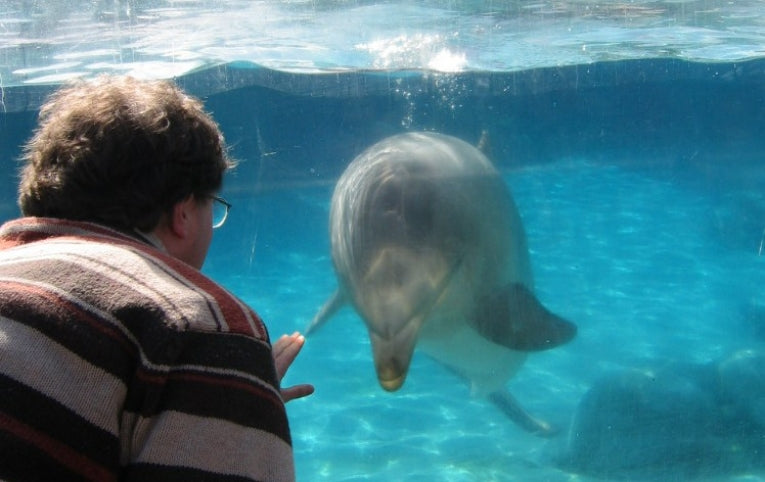It's possible that if we start using resources within the biochemistry and simple physics of organisms' reaction with their environments - we might just begin to inter-relate better ourselves. With only a hundred years or so of deep understanding of our electro-ecology, we flail about in the face of natural phenomena!
Here is an excellent example of a pure research that leads inevitably to human improvement. When radar shocked the forces trying to overcome each other in wars, it was a marvellous invention. Since that time, we need more and more sophistication in our environmental relations. Cameras advance by the day, but war still plagues us with sea and land mines, IEDs and covert electronic.
Basically, people suffer for no reason, simply because we can't develop counter measures quickly. To help, animals such as bats and dolphins have been developing sonar far longer than we have. If their "equipment" doesn't adapt or work, they become extinct. That's a thought to keep in mind.
A dense "fog" confounds human sonar by scattering and stretching the beams when bubbles in the sea get in its way. The Atlantic bottlenose dolphin (Tursiops truncatus) is recorded making bubble-nets and is shown doing so below on Attenborough's "Blue Planet." When it echo-locates a target, Tursiops emits a short click sequence of high intensity sound. If they use a mathematical method of deciphering prey targets from a mass of bubbles, a detection algorithm could be BiaPSS.
This classifies bubble "clutter" from fish targets in a way that you would think dolphins would be unable to use. T.G.Leighton, G.H. Chua and P.R.White worked hard to use BiaPSS with sonar in the Institute of Sound and Vibration research at the University of Southampton. Today's paper in the Proceedings of the Royal Society A: Mathematical and Physical Sciences checked how dolphins are able to interpret their sonar echoes from target fish with interference from their own bubbles.
The answer seemed to be the use of nonlinear mathematics, but dolphins aren't well-known for their applied maths..

"The Blue Planet" is credited with these images; Credit: © BBC
(a) Common dolphins herd sardines with bubble nets.
(b) A dolphin starts to release a cloud of bubbles from its blowhole. A moment later
(c) The dolphin swims on, leaving behind the expanding cloud. Other dolphins enter the frame.
(d) The sardines school within a wall of bubbles and are trapped.
Dolphins do change the amplitude of their clicks and the authors propose that if the two clicks are different, the animal would be able to detect the amplitude change in the echo and so discriminate simple clutter from a prey target. With a similar system to BiaPSS, they could also reduce false alarms.
A dolphin needs to be hunting successfully at all times and the false alarms regularly found on some human sonar would be detrimental to survival in the mammal. The main problem lies with the dolphin's upper frequency limit. At 150kHz, the dolphin can't access frequencies of twice the pulse frequency. Unless they use 75 kHz or less, this nonlinear mathematical use is impossible for them. We shall see what intriguing solution the dolphins invented as research catches up with their systems!

Credit: © University of Southampton/Proceedings of the Royal Society A
Above: Some of the team try and sort out the bubble-detection system of BiaPSS, as they leave harbour. Data acquisition was in the cabin of the RV Bill Conway. They used a Red Funnel Line vessel to create a wake of bubbles!
Discounting the need for further research into what dolphins actually do, Messrs. Leighton, Chua and White have provided us with a sound at the end of the tunnel. The future for detection of electronic devices suddenly looks much brighter because of the potential application of their valuable research.










